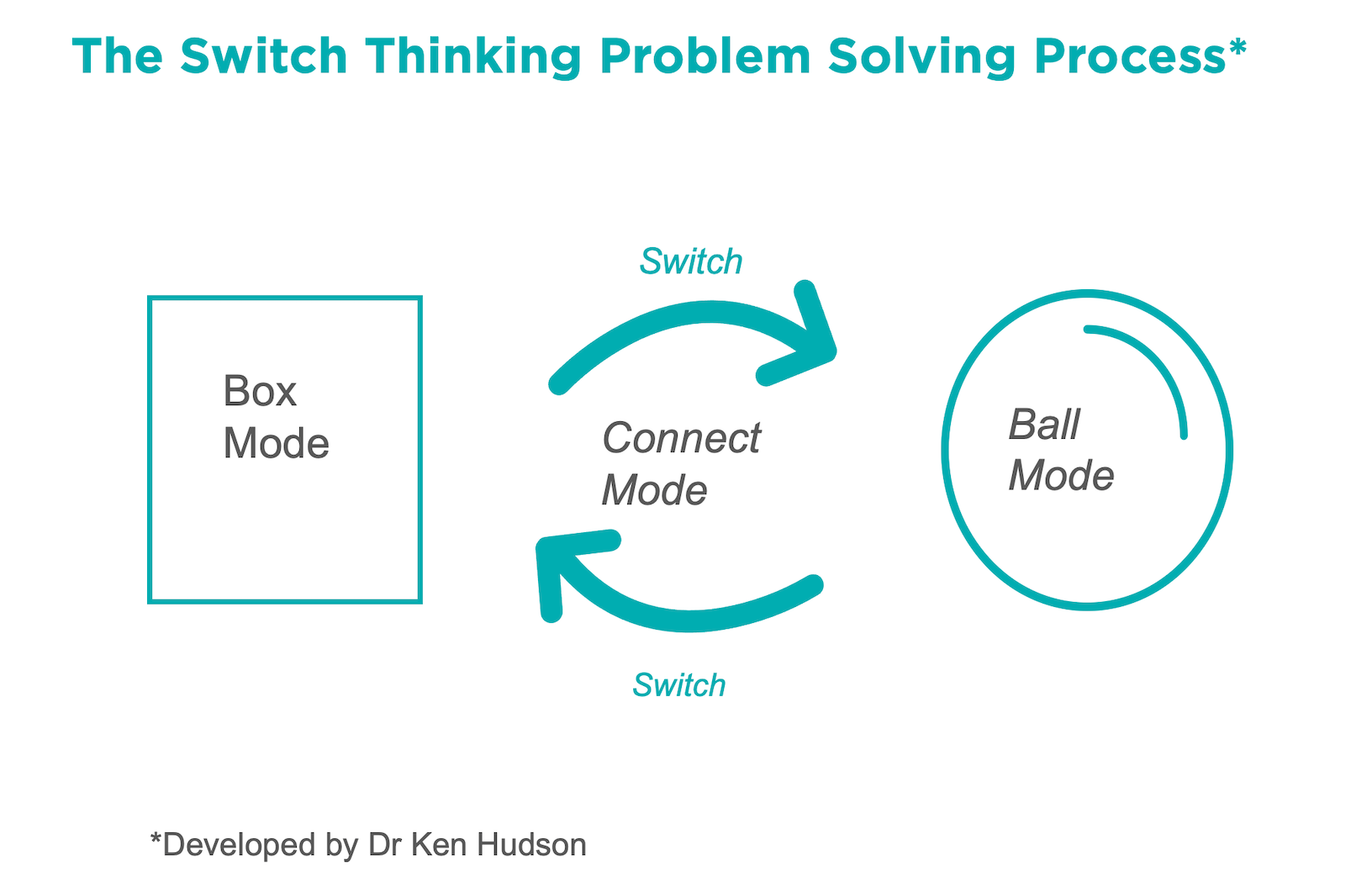Problem solving is so often seen as a rational, linear process.
But here’s the problem.
It rarely produces a breakthrough idea or solution.
To illustrate this point I once worked with a large packaged goods company and enquired about the problem solving process their teams used.
I was told it was world-class.
Wonderful I replied, what are some of the solutions you have developed.
An awkward silence followed.
Yet the Chief Marketing Officer insisted their process was the best in its class.
Let’s make the assumption that having a consistent problem solving process is a good idea.
So to take the Marketing leader’s ambition:
What might a world class problem solving process look like?
- It has to be simple
- Be able to be applied to any sort of problem
- Quick and efficient
- Creative
- Flexible
- Teachable
- Used by any individual, group or team, anytime, anywhere.
It sounds a bit daunting.
Design Thinking for example comes to mind.
Its creative, engaging, consumer (or user) led and can produce new solutions.
However it can be expensive, time-consuming and requires a group or team.
Design Thinking is ideally suited to large, complex problems.
But what about smaller everyday ones?
So let’s move on.
I believe there is a gap in the market.
This is one of the reasons that I developed The Switch Thinking Problem Solving Process.
This process consists of 4 steps.
Step 1: Define the challenge and generate some usual (i.e. box) ideas
People find this an easy, simple starting point.
You get all the predictable ideas out on the table.
And there may nothing wrong with these ideas.
Step 2: Switch your Thinking and create some different (i.e. ball) ideas
This involves using any of the 6 Switches to open up your thinking.
For example, you could switch Perspective and generate some new ideas from the lens of a magician.
What are some surprising ideas?
Ones that appear magical?
What are some ideas that create some theatre for the user or customer?
This step opens and expands your thinking.
Step 3: Connect the usual with the different
This is an underrated yet important step.
The goal here is to connect what has worked before (i.e. usual or box) with might work in the future (i.e. different or ball).
By doing so you can often have the best of both worlds.
Left-field ideas that work.
Breakthrough solutions that are less risky and can be implemented.
Connecting the usual with the different can also generate new solutions.
For example, think of sailing and surfing.
Connect the two and you have developed Wind-Surfing!
Step 4: Evaluate your usual, different and connected ideas
The last step before testing is to evaluate your new ideas or solutions.
I suggest using a range of usual (i.e. Box) and different (i.e. Ball) criteria.
For example:
Some Box criteria might be:
- Can we test it quickly?
- Cost?
- Return?
- Time available?
Some Ball Criteria might be:
- Is it simple?
- Does it solve a problem in a surprising way?
- Are we proud of this solution?
It makes sense to use both head and heart to evaluate your potential new solutions.
In Summary:
The Switch Thinking Problem Solving Process aims to combine the rational and the creative.
It encourages you and your team to switch between opening up and closing down.
And most importantly to try and connect the usual with the different.
To aim for the stars yet still be grounded in reality.

